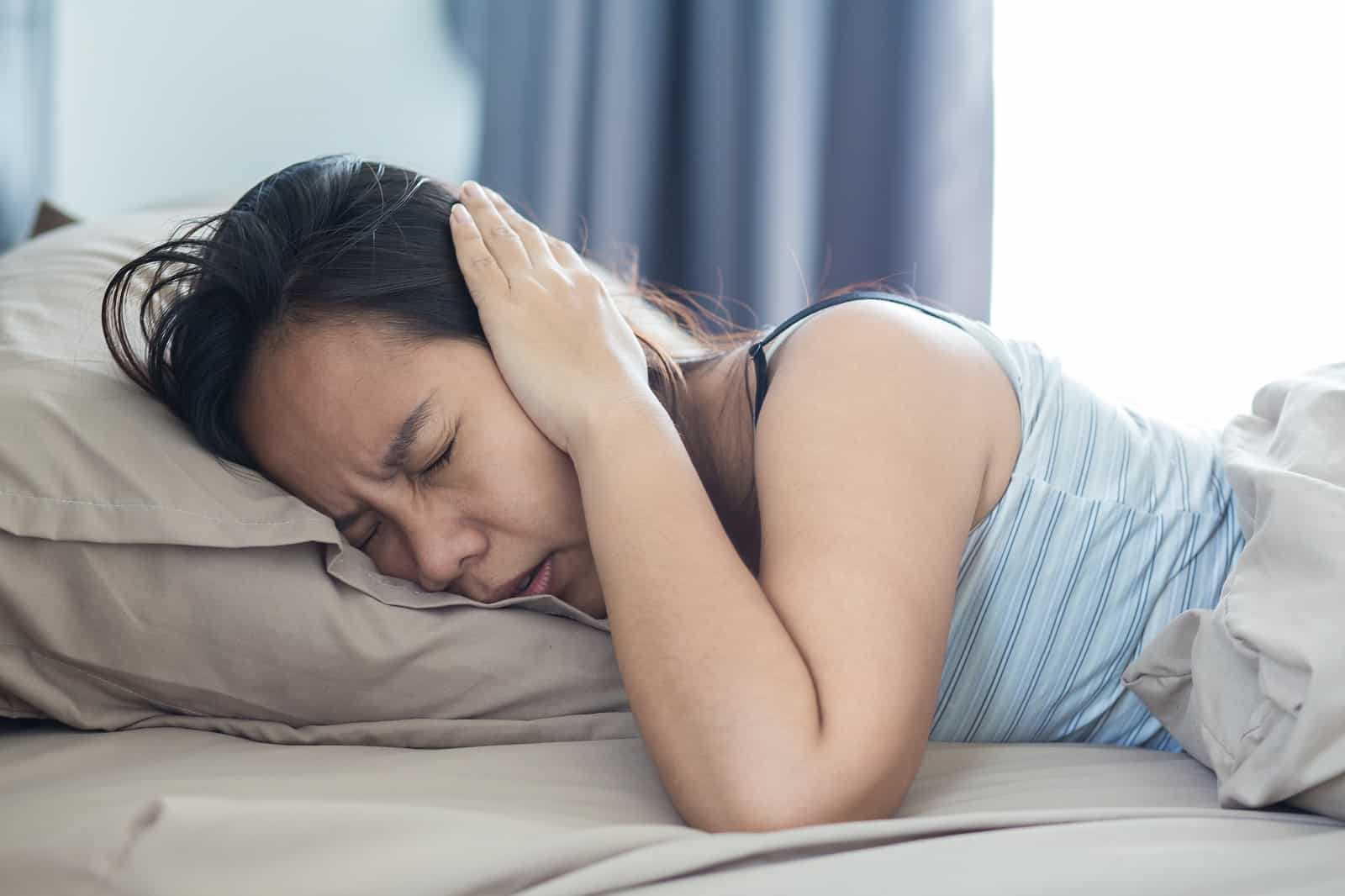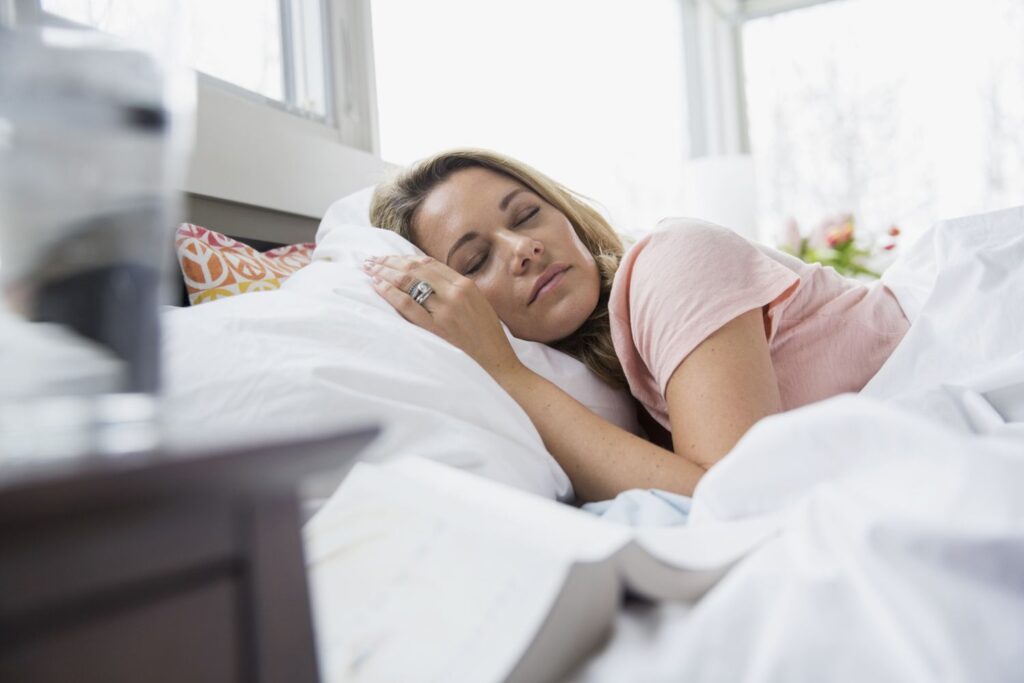A Potential Sleeping Aid – White Noise

It is common knowledge that getting enough sleep is important for all of us and that it is a bodily need. The human body requires adequate rest time to properly digest outside information. The recommended amount of sleep time for adults each day is eight hours. People can’t sleep enough for a variety of reasons, including stress, medicine, and health issues. The most well-known sleep issue is insomnia, which affects 35% of people worldwide. Just like any continuous stress, lack of sleep can easily lead to serious health complications.
One of the often-used methods for improving sleep quality is white noise. White noise is a sort of monotone sound, hum-like and continuous. It can be heard throughout the day or generated by a particular device, which aids in blocking out other external noise and establishing natural rhythms in the surroundings. Professionals in the fields of health and sleep acknowledge a range of white noise devices as sleep aids.
White noise is most often used on newborns and toddlers, according to research neonates fall asleep 80% of the time when exposed to white noise. It is theorized that such effects are present because we are conditioned to such responses since being in a mother’s womb. White noise mimics the womb environment since the sounds reaching a fetus inside the mother also have a monotone nature.
However, researchers state that white noise also helps adults sleep differently. Sleep quality is significantly impacted by noise disturbances, and white noise can help shut out other noises. Furthermore, by blurring the sounds – white noise increases individuals’ arousal threshold, meaning one would be less likely to be suddenly awakened by a loud noise. (Perhaps it would not be as good of an idea if you are using an alarm to be on time for that morning meeting!) Moreover, white noise also reduces our onset sleep latency, in other words, it helps us fall asleep significantly faster. Another way white noise helps us sleep better is by reducing anxiety, which decreases both physical and psychological arousal.

Overall, there are many ways white noise can naturally aid our sleep. But in theory, just like babies, we can also be conditioned to sleep at the sound of white noise. Or any stimulus for that matter. If you start adding white noise as part of your sleep routine, your body just might learn with time that once it is on the lights are out.
But – there is always a “but” in any honest research. There are some conflicting findings on the effects of white noise on sleep. And it does not help every individual out there. Some people do feel more irritated when exposed to such noise. Research has also shown that the effects of white noise decline as we age. Furthermore, the level of the tone of the sound, measured in decibels, can easily harm your ears and some research suggested that a lot of the white noise machines produce sound at a higher tone than usual.
All in all, white noise – like most things has its pros and cons, but if you are dealing with sleep issues you can give it a shot and do your experiment by observing how your body responds to it. After all, some people can only sleep in silence and some drift off to Vivaldi.
by Diana Sultanova, Mental Health Intern
References:
Alkahtani, M. N., Alshathri, N. A., Aldraiweesh, N. A., Aljurf, L. M., Aldaej, L., Olaish, A. H., Nashwan, S. Z., Almeneessier, A. S., & BaHammam, A. S. (2019). The effect of air conditioner sound on sleep latency, duration, and efficiency in young adults. Annals of thoracic medicine, 14(1), 69–74. https://doi.org/10.4103/atm.ATM_195_18
Amiri, M. J., Sadeghi, T., & Negahban Bonabi, T. (2017). The effect of natural sounds on the anxiety of patients undergoing coronary artery bypass graft surgery. Perioperative medicine (London, England), 6, 17. https://doi.org/10.1186/s13741-017-0074-3
Ebben, M.R., Yan, P. & Krieger, A. C. (2021). The effects of white noise on sleep and duration in individuals living in a high noise environment in New York City. Sleep Messineo, L., Taranto-Montemurro, L., Sands, S. A., Oliveira Marques, M. D., Azabarzin, A., & Wellman, D. A. (2017). Broadband Sound Administration Improves Sleep Onset Latency in Healthy Subjects in a Model of Transient Insomnia. Frontiers in neurology, 8, 718. https://doi.org/10.3389/fneur.2017.00718
Pietrzak, J., Kurdyś, P., Surówka, L. & Obuchowicz, A. (2019). Use of white noise-emitting devices in infants and small children as assessed by their parents. Pediatria i Medycyna Rodzinna, 15(3), 291-296. https://doi.org/10.15557/PiMR.2019.0049
Spencer, J. A., Moran, D. J., Lee, A., & Talbert, D. (1990). White noise and sleep induction. Archives of disease in childhood, 65(1), 135–137. https://doi.org/10.1136/adc.65.1.135
Stanchina, M. L., Abu-Hijleh, M., Chaudhry, B. K., Carlisle, C. C., & Millman, R. P. (2005). The influence of white noise on sleep in subjects exposed to ICU noise. Sleep medicine, 6(5), 423–428. https://doi.org/10.1016/j.sleep.2004.12.004
